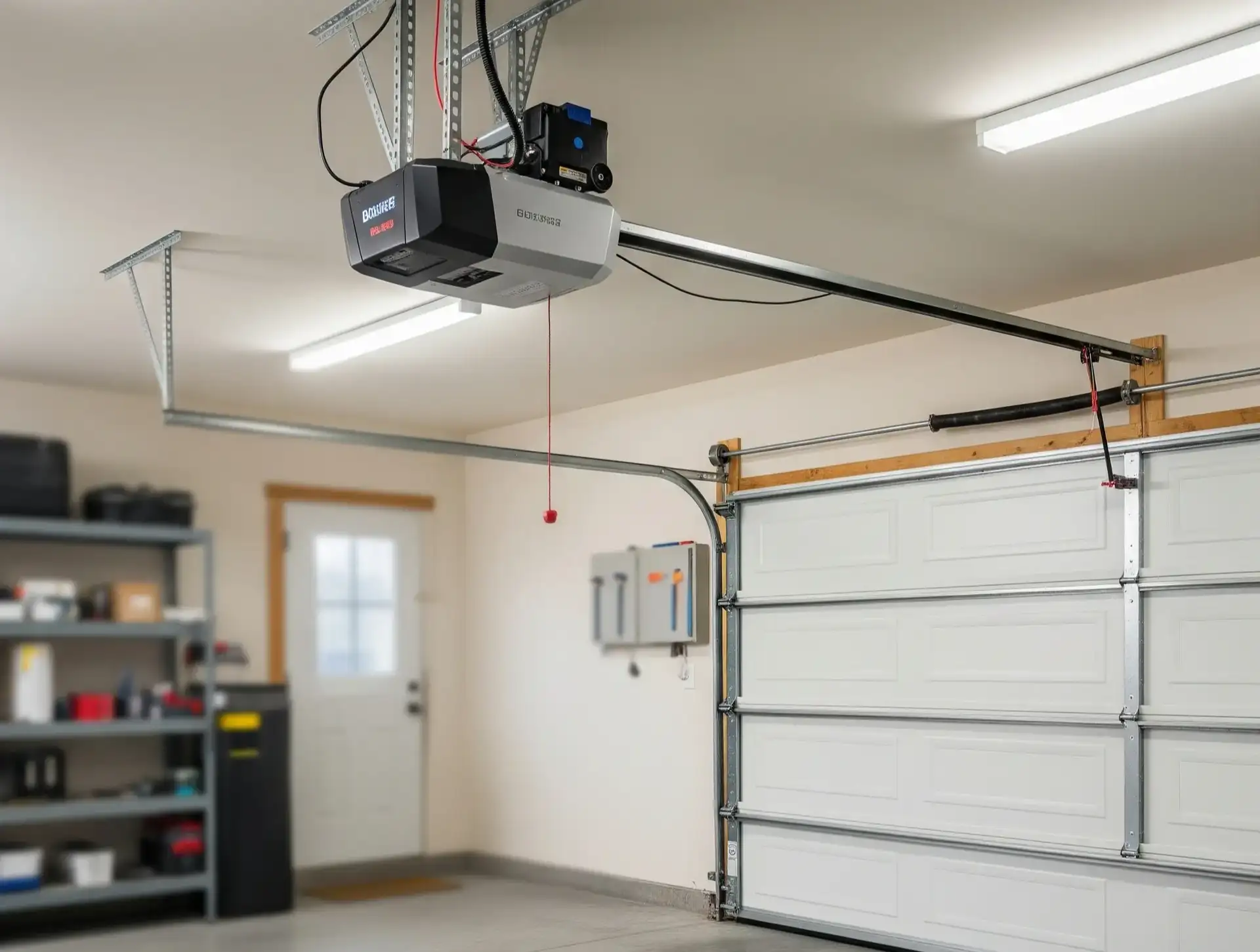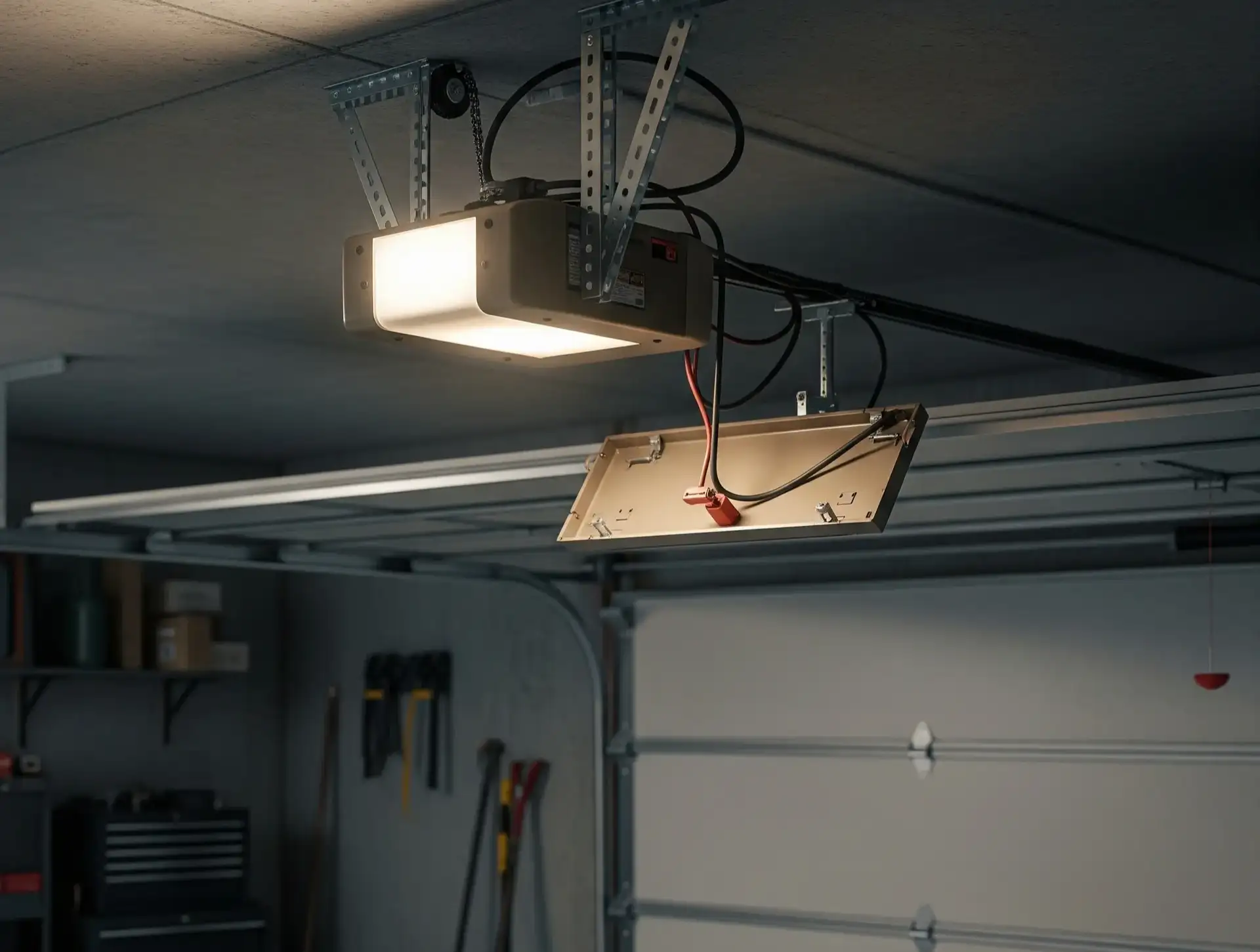How to Reconnect a Garage Door Opener: Quick Steps After Disconnection
Published: Sep 8, 2025
If your garage door stopped working after a power outage or emergency release, it’s a common situation. Manual mode comes in handy during emergencies — but once power returns, getting the system back to normal isn’t always clear. Whether you’re a homeowner, business owner, or property manager, knowing what to do next can save time, prevent damage, and restore convenience.
In this guide, 24H Garage Doors explains how to reconnect a garage door opener with clear, simple steps for safe, automatic use again.
When Your Garage Door Stays in Manual Mode

After you pull the red emergency cord, your garage door switches to manual mode. This lets you lift and lower the door by hand, which is handy in a power outage or if your opener stops responding. But here’s where it gets tricky — many people don’t know they need to reconnect the system afterward.
If the door moves too easily or the remote doesn’t respond, the opener and trolley are likely disconnected. In this case, if you know how to reconnect a garage door to the opener, you can restore full functionality. If something doesn’t feel right after you try, it may be time to contact a professional — 24H Garage Doors is always available to assess and repair your system quickly.

A Few Easy Steps: How to Reconnect a Garage Door to the Opener
If everything looks intact and you feel ready to handle it, reconnecting the opener is typically a straightforward process. Before starting, make sure the area around the door is clear of people, pets, and anything that could get in the way. Also, make sure the door is completely closed to avoid sudden movement. Here’s how to reconnect a garage door opener step by step.

- Start with the door closed. Make sure the garage door is all the way down — even a small gap can keep the opener from latching on.
- Locate the emergency release cord. This cord, often red, hangs from the center of the track and is what you pulled to disconnect the door.
- Reset the system. Pull the cord gently toward the door. This realigns the mechanism so the opener’s arm can re-engage the trolley.
- Reactivate the system. Use either your wall switch or garage door opener remote to run the motor. As the system moves, it should reconnect automatically.
- Let the door cycle once. Open and close the door fully to confirm everything’s back to normal. If the door hesitates or sticks, give it another try or inspect for anything off.
If your opener still doesn’t respond after following these steps, there may be a deeper issue with the system, which we’ll cover below.

How to Reconnect a Garage Door Opener Remote
Once the door is reattached, the next step is making sure the remote works again. If it doesn’t, the device likely needs to be paired with the opener. Here’s how to reconnect a garage door opener remote in just a few steps:

- Look for the Learn or Program button on the opener unit — it’s usually tucked near the back or under the light cover.
- Tap that button once. A light should flash, showing it’s ready to sync.
- Within about 30 seconds, press and hold the main button on your remote.
- A quick flash or soft click from the opener will confirm the remote has reconnected.
- Try the remote out. If nothing happens, try again — or swap in a new battery just in case.
If the remote still won’t link, it may be time to clear the system and start from scratch. You can follow our guide on how to erase garage door opener settings to fully reset your opener’s memory and start fresh.

Still Not Working? Let Us Take a Look
Sometimes, the problem goes beyond a quick fix. If your system still won’t reconnect, the issue could be deeper than a manual reset. Problems like wiring faults, motor failure, or sensor misalignment can prevent your garage door opener from working properly.
At 24H Garage Doors, we offer full garage door opener repair services — from diagnostics and minor adjustments to complete opener replacements. Our goal is simple — a smooth, responsive system that works when you need it. Visit our website or just give us a call to schedule an appointment and get your system checked by a trusted technician.
You may also like


